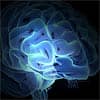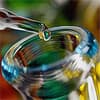
What's hot
What's hot
| News flashes are posted here frequently to keep you up-to-date with the latest advances in health and longevity. We have an unparalleled track record of breaking stories about life extension advances.
Eating more fish associated with lower risk of Alzheimer's disease
The study's 260 subjects were selected from participants in the Cardiovascular Health Study, which was designed to identify factors related to heart disease and stroke. Dietary questionnaires completed by the subjects were analyzed for the type and frequency of fish consumed. Brain structure was evaluated by magnetic resonance imaging (MRI) ten years after enrollment. Increased weekly intake of baked or broiled fish was associated with greater gray matter brain volume in several areas, which was in turn associated with a significantly lower risk of developing cognitive decline or Alzheimer's disease. "This is the first study to establish a direct relationship between fish consumption, brain structure and Alzheimer's risk," Dr Raji announced. "The results showed that people who consumed baked or broiled fish at least one time per week had better preservation of gray matter volume on MRI in brain areas at risk for Alzheimer's disease." "Working memory, which allows people to focus on tasks and commit information to short-term memory, is one of the most important cognitive domains," he added. "Working memory is destroyed by Alzheimer's disease. We found higher levels of working memory in people who ate baked or broiled fish on a weekly basis, even when accounting for other factors, such as education, age, gender and physical activity." "Consuming baked or broiled fish promotes stronger neurons in the brain's gray matter by making them larger and healthier," Dr Raji concluded. "This simple lifestyle choice increases the brain's resistance to Alzheimer's disease and lowers risk for the disorder." —D Dye Resveratrol improves genetic repair of irradiated stem cells
Researchers at the Department of Genetics and the Human Genetics Institute of New Jersey at Rutgers University demonstrated declining levels of mouse embryonic stem cell survival in association with increasing radiation doses. They then pretreated cells with three varying concentrations of resveratrol or no resveratrol 48 hours prior to exposure to 5 Gy of x-rays. Other cells were pretreated with the lowest concentration of resveratrol 40 minutes prior to being irradiated. While cells pretreated with resveratrol had the same amount of reactive oxygen species formation and DNA strand breaks measured after x-ray exposure, those that received the lowest dose (10 mM) of resveratrol 48 hours prior to exposure had more than double the level of survival compared to cells that did not receive the compound, and exhibited more rapid DNA damage repair and resumption of cell division. Pretreatment 40 minutes in advance of exposure and treatment with higher doses failed to result in increased cell survival. The authors suggest that a low dose of resveratrol could result in low level DNA damage signaling that is not severe enough to induce cell cycle arrest or programmed cell death. "Our results indicate that a low concentration of resveratrol introduced well in advance of ionizing radiation exposure can improve the survival of mouse embryonic stem cells without jeopardizing their genomic integrity," the authors write. —D Dye Metformin helps prevent breast cancer growth fueled by estrogen and other compounds
James Trosko and his associates at Seoul National University's College of Veterinary Medicine studied the effects of metformin in miniature human breast cancer tumors grown in culture. The cells were exposed to the breast tumor-promoting hormone estrogen and the endocrine disruptors TCDD and bisphenol-A (BPA), resulting in an increase in tumor growth as well as increased expression of OCT4, a marker of cancer stem cells. Cancer stem cells have been recently demonstrated to sustain tumor growth and are resistant to anticancer therapies. The addition of metformin resulted in a reduction in tumor size and number. In estrogen and TCDD-treated tumors, expression of OCT4 was also reduced. "People with type-2 diabetes are known to be at high risk for several diabetes-associated cancers, such as breast, liver and pancreatic cancers," stated Dr Trosko, who is also a professor at Michigan State University College of Human Medicine's Department of Pediatrics and Human Development. "While metformin has been shown in population studies to reduce the risk of these cancers, there was no evidence of how it worked." "While future studies are needed to understand the exact mechanism by which metformin works to reduce the growth of breast cancers, this study reveals the need to determine if the drug might be used as a preventive drug and for individuals who have no indication of any existing cancers," he added. "Though we still do not know the exact molecular mechanism by which it works, metformin seems to dramatically affect how estrogen and endocrine-disrupting chemicals cause the pre-existing breast cancers to grow." —D Dye Arginine restores T-cell function in glioblastoma patients
T-cells are a type of white blood cell that are dependent upon arginine for their activation and function. Neutrophils, which are another type of white blood cell, secrete an enzyme known as arginase in order to halt their own immune response after treating infection. While neutrophils usually die after secreting arginase, many continue to survive and secrete arginase in those with glioblastoma. Because arginase breaks down arginine, T-cell function is consequently impaired. "Persistence of activated neutrophils and increased arginase in the circulation of glioblastoma patients is a fascinating phenomenon, particularly considering that under normal conditions, neutrophils are expected to have an average lifespan of just several hours after activation," Dr Waziri stated. "From one perspective, it appears that glioblastoma is taking advantage of a simple, evolutionarily-ancient method for controlling out-of-control immunity to avoid the specific antitumor immune response." Dr Waziri hopes to test the effects of long term arginine supplementation on glioblastoma recurrence in humans and explore its potential therapeutic benefits. "Our overall goal is to improve the efficacy of immunotherapy for glioblastoma," he noted. "It's likely that this will require a two-stage approach, including stimulation of the immune system with something like a tumor vaccine while simultaneously targeting the suppressive effects of tumors on the immune system." —D Dye Sunlight an inadequate source of vitamin D for individuals of South Asian origin living in northern latitude
Fifteen men and women of Indian, Pakistani and Bangladeshi ethnicity were included in the current study. The subjects were exposed to ultraviolet radiation three times weekly for six weeks in January and February to simulate sun exposure over the summer school holiday period. Blood samples obtained before treatment and at weekly intervals during the study were analyzed for serum 25-hydroxyvitamin D. All of the subjects had insufficient levels of vitamin D, defined as less than 20 nanograms per milliliter (ng/mL), or deficient levels of less than 5 ng/mL at the beginning of the study. While vitamin D levels rose over the six week period, none were higher than 20 ng/mL. In comparison, earlier research involving Caucasian men and women treated with an identical protocol resulted in elevation of average 25-hydroxyvitamin D levels to sufficient levels among 90 percent of participants. "Public health advice should emphasize to people of pigmented skin that it is inappropriate for them to follow sun-exposure and sun-protection guidance geared for fairer skin types, and an increased oral vitamin D intake is needed," the authors conclude. —D Dye Garlic compound shows promise in cardiac conditions
Emory University School of Medicine Professor David Lefer, along with postdoctoral fellow Benjamin Predmore, simulated heart attacks in mice by blocking their coronary arteries for forty-five minutes. Prior to the restoration of blood flow, the animals received diallyl trisulfide or an inert substance. When the animals' hearts were examined 24 hours later, the proportion of damaged tissue in the area at risk was reduced by 61 percent in mice that received diallyl trisulfide compared to the other mice. The researchers believe that diallyl trisulfide could be useful in situations in which hydrogen sulfide may be beneficial. "Interruption of oxygen and blood flow damages mitochondria, and loss of mitochondrial integrity can lead to cell death," Dr Predmore explained. "We see that diallyl sulfide can temporarily turn down the function of mitochondria, preserving them and lowering the production of reactive oxygen species." In other research conducted by team member Kazuhisa Kondo, diallyl sulfide administered twice daily reduced enlargement of the heart in a mouse model of heart failure. "We are now performing studies with orally active drugs that release hydrogen sulfide," noted Dr Lefer, who also directs the Cardiothoracic Surgery Research Laboratory at Emory University Hospital. "This could avoid the need to inject sulfide-delivery drugs outside of an emergency situation." —D Dye Decreased vitamin D levels found in recurrent inflammatory spinal cord disease
The study included 44 men and women with monophasic (having one phase) idiopathic transverse myelitis and 33 with recurrent transverse myelitis/NMO/NMO spectrum disorders. Maureen A. Mealy, RN, BSN of Johns Hopkins University and her associates uncovered a significant reduction in serum 25-hydroxyvitamin D among those with recurrent disease. While vitamin D levels were an average 33 nanograms/milliliter (ng/mL) among those with idiopathic transverse myelitis, they averaged 18 ng/mL in the recurrent group. Adjustment for age, gender and other factors resulted in a 10 ng/mL difference between the groups. "Our findings suggest that there may be an association between lower total 25-hydroxyvitamin D levels in patients with recurrent TM/NMO/NMO spectrum disorders as compared with their counterparts with monophasic disease," the authors write. "This is consistent with other recurrent autoimmune conditions and points to a common link between low vitamin D levels and immunologic dysregulation." "To our knowledge, this is the first study demonstrating that lower vitamin D levels correlate with recurrent spinal cord diseases such as NMO and NMO spectrum disorders as compared with monophasic spinal cord diseases like idiopathic TM," they announce. "This study provides a basis for a prospective trial of measuring 25-hydroxyvitamin D levels in these patient populations and assessing the influence of vitamin D supplementation on the frequency of relapses in those with recurrent inflammatory spinal cord disease." —D Dye Activating gene slows aging
UCLA assistant professor of integrative biology and physiology David Walker and his associates activated the gene, known as PGC-1, and found an increase in life span of up to 50 percent. "We took this gene and boosted its activity in different cells and tissues of the fly and asked whether this impacts the aging process," explained Dr Walker. "We discovered that when we boost PGC-1 within the fly's digestive tract, the fly lives significantly longer. We also studied neurons, muscle and other tissue types and did not find life extension; this is telling us there is something important about the digestive tract." "By activating this one gene in this one tissue — the intestine — the fly lives longer; we slow aging of the intestine, and that has a positive effect on the whole animal," continued Dr Walker, who is a member of UCLA's Molecular Biology Institute. "Our study shows that increasing PGC-1 gene activity in the intestine can slow aging, both at the cellular level and at the level of the whole animal." "We all think about protecting the brain and the heart, but the intestine is a vital tissue type for healthy aging," he observed. "If anything goes wrong with the mitochondria in cells, the consequences could be devastating, and if anything goes wrong with our intestines, that may have devastating consequences for other tissue types and organs. Not only is the intestine essential for the uptake of nutrients that are a vital source of energy, but it is also an important barrier that protects us from toxins and pathogens in the environment. The intestine has to be well-maintained. "No one yet knows what causes aging at the cellular or tissue level," he noted. "As we age, our mitochondria become less efficient and less active. That has far-reaching consequences, because if the mitochondria decline, then all of our cellular functions may be compromised. However, it's a dangerous road to travel to say, 'This is the cause of aging.'" —D Dye Meta-analysis supports protective effect for fiber, whole grains against colorectal cancer risk
Dagfinn Aune and colleagues at Imperial College London along with Ellen Kampman of Wageningen University in the Netherlands selected 21 prospective studies including nearly 2 million participants for their analysis. They observed a modest association between increased fiber intake and a reduction in colorectal cancer risk. For every ten grams per day increase in total fiber and cereal fiber, a 10 percent reduction in colorectal cancer risk was observed in comparison with the risk experienced by those whose intake was lowest. Intake of whole grains, which are high in fiber, had a more pronounced effect, with those consuming three servings per day experiencing an average 17 percent lower disease risk. Although no association between fiber from fruit or vegetables was noted, previous research has uncovered a protective benefit for whole fruits and vegetables against colorectal cancer risk. Mechanisms suggested for fiber's protective effect include increased stool bulk and dilution of carcinogens in the colonic lumen, reduced transit time, and bacterial fermentation of fiber to short chain fatty acids. "A high intake of dietary fiber, in particular cereal fiber and whole grains, was associated with a reduced risk of colorectal cancer," the authors conclude. They recommend further studies involving subtypes of fiber and analysis of colorectal cancer risk according to its site within the colon. In an accompanying editorial, Anne Tjønneland and Anja Olsen write that "Although a high intake of whole grain can be recommended, research is still needed to explain the biological mechanisms responsible for the beneficial effects of these foods in detail, including the effects of different types of grain." —D Dye Saffron compound protects against neuroinflammation
Acting on the hypothesis that endoplasmic reticulum stress is a component of neuroinflammation, Dr Power's team confirmed that transcript levels of endoplasmic reticulum stress genes were increased in the spinal cords of animals in which autoimmune encephalomyelitis was induced in comparison with healthy litter mates. (The endoplasmic reticulum is one of the cell's organelles and is responsible for synthesizing various compounds.) Treatment with crocin beginning one week after disease induction was found to suppress spinal cord endoplasmic reticulum stress and inflammatory gene expression, and was associated with reduced demyelination (loss of the nerve cells' protective coating). In additional, neurobehavioral effects associated with encephalomyelitis were reduced by crocin. "We found there is a compound in saffron, known as crocin, that exerts a protective effect in brain cell cultures and other models of MS," stated Dr Power, who is a member of the University of Alberta's Faculty of Medicine & Dentistry. "It prevented damage to cells that make myelin in the brain. Myelin is insulation around nerves. Multiple sclerosis is characterized by inflamed brain cells that have lost this protective insulation, which ultimately leads to neurodegeneration." "There are still many questions to be answered about how crocin exerts these neuroprotective effects, but this research highlights a potential treatment role for crocin in diseases involving chronic neuroinflammation – something that had not been recognized until now," he noted. Dr Powers suggests that increased endoplasmic reticulum stress could be the result of infection with a virus. "We all have this ancient virus in our DNA, but for some reason it is excessively turned on in MS," he remarked. "We are doing more research investigating this link." —D Dye Vitamin D levels in spinal surgery patients “alarming”
Earlier research in patients undergoing orthopedic surgery had found insufficient vitamin D levels among 43 percent. In the current study, which is the first to evaluate spine surgery patients, associate professor of orthopedic surgery Jacob M. Buchowski and his associates at Washington University School of Medicine discovered inadequate levels in 57 percent of the participants and deficient levels in 27 percent. Dr Buchowski became aware of the possibility of vitamin D deficiency in spine surgery patients upon observing the slow recovery of a patient in her forties. "I was examining her and trying to figure out why the vertebrae didn't fuse," stated Dr Buchowski. "She mentioned that she had recently been diagnosed with vitamin D deficiency, and it was like a light bulb went off." "We rarely think about deficiency in younger patients," he observed. "More of the older patients in this study had a history of taking supplements, and as a result, they had less risk for vitamin D deficiency than younger patients." “Our findings suggest it may be worthwhile to screen surgery patients for vitamin D," Dr Buchowski continued. "We think those with insufficient levels of vitamin D may benefit from taking 50,000 international units of the vitamin once a week for eight weeks before surgery as this may help the recovery after spinal fusion surgery." "Vitamin D is inexpensive and easily stored in the body," he added. "My hunch is that having adequate levels may help the spine fuse following surgery." —D Dye Old cells rejuvenated
Jean-Marc Lemaitre and his colleagues utilized skin cells known as fibroblasts derived from donors ranging in age from 74 to 101 years. The cells were first multiplied to reach a senescent state, at which the end of cellular proliferation is reached. Using a newly developed cocktail of six genetic factors, the senescent cells were reprogrammed into functional induced pluripotent stem cells, which had the characteristics of embryonic stem cells (including a capacity for self-renewal and differentiation), without any traces of having previously aged. The cells were then differentiated into adult cells and compared to the original cells. "Signs of aging were erased and the induced pluripotent stem cells obtained can produce functional cells, of any type, with an increased proliferation capacity and longevity," reported Dr Lemaitre, who is a researcher at INSERM’s Functional Genomics Institute. "Our strategy worked on cells taken from donors in their 100s. The age of cells is definitely not a reprogramming barrier." "This research paves the way for the therapeutic use of induced pluripotent stem cells, insofar as an ideal source of adult cells is provided, which are tolerated by the immune system and can repair organs or tissues in elderly patients," he concluded. —D Dye High dose vitamin D supplementation suggested for obese adolescents
For the current study, University of Missouri Adolescent Diabetes and Obesity clinic patients with vitamin D insufficiency or deficiency were randomized to receive 4,000 international units (IU) per day vitamin D3 or a placebo for six months, in addition to standard diabetes treatment. Serum 25-hydroxyvitamin D levels were re-evaluated at the end of the treatment period. The researchers observed significantly higher vitamin D levels in subjects who received vitamin D compared to those who received the placebo. "Obese adolescents face an increased risk for deficiency because they tend to absorb vitamin D in their fat stores, which prevents it from being utilized in their blood," explained Dr Peterson, who is the director of undergraduate studies for the Department of Nutrition and Exercise Physiology at the University's College of Human Environmental Sciences. "We found that a daily dose of 4,000 IUs of vitamin D3, the maximum intake level set by the Institute of Medicine, is both safe and effective at improving vitamin D status in obese adolescents." "If obese adolescents only consumed the recommended 600 IUs, they would be in trouble," she noted. "It takes 4,000 IUs to raise their vitamin D status within a sufficient range. This is much higher than the currently recommended daily amount for this age group. This indicates that physicians need to carefully evaluate the vitamin D status in their overweight and obese patients." —D Dye
|

 November 30, 2011. At the Radiological Society of North America's meeting on November 30, Cyrus Raji, MD, PhD of the University of Pittsburgh reported the results of a study which found a relationship between increased fish intake and a lower risk of developing mild cognitive impairment as well as
November 30, 2011. At the Radiological Society of North America's meeting on November 30, Cyrus Raji, MD, PhD of the University of Pittsburgh reported the results of a study which found a relationship between increased fish intake and a lower risk of developing mild cognitive impairment as well as  November 28, 2011. An article published online on November 2, 2011 in the journal
November 28, 2011. An article published online on November 2, 2011 in the journal  November 25, 2011. An article published on November 23, 2011 in the journal
November 25, 2011. An article published on November 23, 2011 in the journal  November 23, 2011. The November 15, 2011 issue of
November 23, 2011. The November 15, 2011 issue of  November 21, 2011. The November, 2011 issue of the
November 21, 2011. The November, 2011 issue of the  November 18, 2011. The American Heart Association Scientific Sessions conference held this year in Orlando was the site of a presentation on November 16 of the findings of researchers at Emory University School of Medicine of an ability for diallyl trisulfide, a compound in garlic, to deliver hydrogen sulfide to the heart. Hydrogen sulfide gas protects the heart from damage in low doses, yet has been difficult to use as a treatment due to its unstable and volatile nature.
November 18, 2011. The American Heart Association Scientific Sessions conference held this year in Orlando was the site of a presentation on November 16 of the findings of researchers at Emory University School of Medicine of an ability for diallyl trisulfide, a compound in garlic, to deliver hydrogen sulfide to the heart. Hydrogen sulfide gas protects the heart from damage in low doses, yet has been difficult to use as a treatment due to its unstable and volatile nature. November 16, 2011. An article published online on November 14, 2011 in the American Medical Association journal
November 16, 2011. An article published online on November 14, 2011 in the American Medical Association journal  November 14, 2011. In an article published online on November 2, 2011 in the journal
November 14, 2011. In an article published online on November 2, 2011 in the journal  November 11, 2011. The results of a meta-analysis published online on November 11, 2011 in the
November 11, 2011. The results of a meta-analysis published online on November 11, 2011 in the  November 9, 2011. In the November 1, 2011 issue of the
November 9, 2011. In the November 1, 2011 issue of the  November 7, 2011. At the 26th Annual Meeting of the North American Spine Society held in Chicago, it was revealed that “an alarmingly high rate of vitamin D abnormality” was uncovered in 313 men and women undergoing spinal
November 7, 2011. At the 26th Annual Meeting of the North American Spine Society held in Chicago, it was revealed that “an alarmingly high rate of vitamin D abnormality” was uncovered in 313 men and women undergoing spinal  November 4, 2011. The November 1, 2011 issue of the journal
November 4, 2011. The November 1, 2011 issue of the journal  November 2, 2011. In a presentation at the annual meeting of Experimental Biology, University of Missouri associate professor of nutrition and exercise physiology Catherine Peterson reported a benefit for a high dosage of vitamin D3 in adolescents suffering from
November 2, 2011. In a presentation at the annual meeting of Experimental Biology, University of Missouri associate professor of nutrition and exercise physiology Catherine Peterson reported a benefit for a high dosage of vitamin D3 in adolescents suffering from